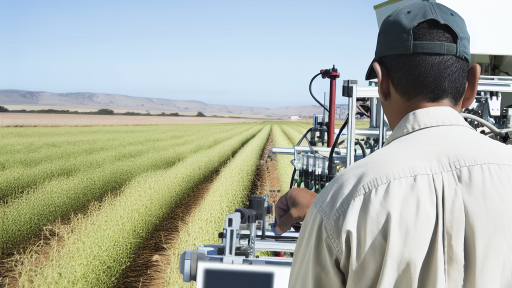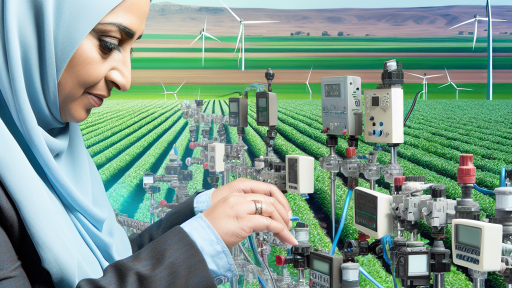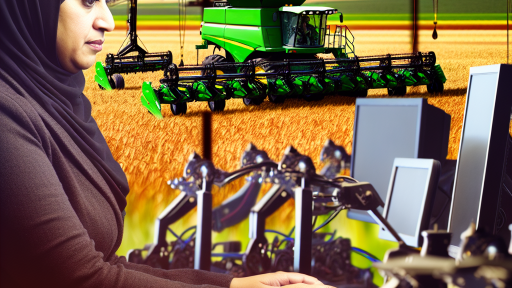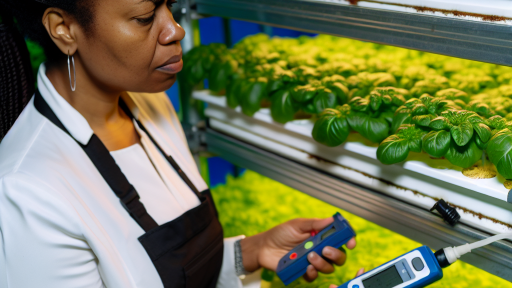Overview of Traditional Farming Practices and Their Limitations
Understanding Traditional Farming
Traditional farming has deep roots across cultures and societies.
This practice often relies on manual labor and simple tools.
Farmers use techniques passed down through generations.
These methods prioritize local knowledge and environmental conditions.
Common Techniques Used in Traditional Farming
Cropping systems vary, but many rely on rotation and intercropping.
Farmers often cultivate staple crops such as wheat, corn, and rice.
Livestock management is also crucial in traditional farming systems.
Additionally, the use of organic fertilizers enriches the soil.
Limitations of Traditional Farming
Despite its benefits, traditional farming faces significant challenges.
For instance, efficiency can suffer under labor-intensive methods.
This often leads to lower crop yields over time.
Climate change further exacerbates these limitations.
Extreme weather patterns threaten food security worldwide.
The Impact of Population Growth
As the global population continues to rise, food demand increases.
Traditional farms struggle to meet these mounting demands.
Transform Your Agribusiness
Unlock your farm's potential with expert advice tailored to your needs. Get actionable steps that drive real results.
Get StartedThis challenge puts pressure on farmers to enhance productivity.
Ultimately, many farms may need to adopt new technologies.
Land Degradation and Sustainability Issues
Over time, certain practices can degrade land quality.
Soil erosion and loss of nutrients threaten long-term farming viability.
Additionally, traditional methods may struggle with pest management.
These factors contribute to unsustainable agricultural practices.
Innovation for Sustainable Agriculture
In light of these limitations, innovation becomes essential.
Integrating technology offers potential solutions for traditional farming.
Farmers may benefit from robotics and automation advancements.
These innovations could lead to increased efficiency and sustainability.
Introduction to Robotics in Agriculture
Definitions
Robotics refers to the technology that designs and builds robots.
These machines can perform tasks automatically or semi-autonomously.
In agriculture, robotics aims to enhance productivity and efficiency.
Types of Agricultural Robots
Various types of robots assist in different farming activities.
Some focus on planting and harvesting crops.
Others monitor plant health and soil conditions.
Furthermore, robots can automate livestock feeding and management.
Planting and Harvesting Robots
These robots help in precisely planting seeds at optimal intervals.
They ensure that each seed has the best chance to germinate.
During harvest, robots reduce labor costs and increase speed.
Monitoring Robots
Monitoring robots utilize sensors to analyze crop health.
They collect data on soil moisture, nutrient levels, and pests.
This information helps farmers make informed decisions.
Livestock Management Robots
Livestock robots manage feeding and monitoring animal health.
Showcase Your Farming Business
Publish your professional farming services profile on our blog for a one-time fee of $200 and reach a dedicated audience of farmers and agribusiness owners.
Publish Your ProfileThey automate the feeding process, saving time and labor.
Additionally, they track animals’ behavior and health metrics.
The Impact of Robotics in Farming
Integrating robotics transforms traditional farming practices.
It enhances efficiency and reduces reliance on manual labor.
Moreover, robotics can help maximize crop yields sustainably.
As technology evolves, robotics will likely become more common.
Benefits of Integrating Robotics into Traditional Farming
Enhanced Efficiency
Robotics significantly improves efficiency in farming operations.
Automation reduces the time required for various tasks.
This leads to faster planting, harvesting, and maintenance schedules.
Many farmers can operate equipment remotely, which saves time.
Additionally, robotics minimizes the chances of human error.
Cost Reduction
Incorporating robotics helps reduce labor costs substantially.
Automated systems require fewer workers on-site.
This allows farmers to allocate resources more effectively.
Over time, robotic systems can lead to decreased operational costs.
Moreover, maintaining robotic equipment can be less expensive than hiring labor.
Improved Precision
Robots enhance precision in farming tasks.
For instance, drones can monitor crops accurately.
Advanced machinery utilizes sensors for better planting depth.
As a result, crops receive optimal nutrient distribution.
Enhanced accuracy also leads to higher crop yields.
Increased Safety
Robotics contributes to improved safety standards in agriculture.
Automated machines take over dangerous tasks traditionally done by workers.
This includes operating heavy machinery and applying pesticides.
Consequently, fewer injuries occur on the farm.
Farmers also face reduced exposure to harmful chemicals.
Better Data Collection and Analysis
Integrating robotics allows for better data collection.
Farmers can gather real-time information about crop health.
Advanced sensors and drones provide insights into soil conditions.
Farmers can analyze data to make informed decisions.
This proactive approach leads to more successful harvests.
See Related Content: Efficient Irrigation Solutions by Agri Services International in Lake Wales
Challenges and Considerations in Implementing Robotics
Initial Investment Costs
Integrating robotics into traditional farming requires substantial initial investment.
Farmers need to consider the cost of purchasing advanced machinery.
Additionally, ongoing maintenance can add to financial burdens.
Funding options may be available through government programs.
Nevertheless, farmers should carefully assess returns on investment.
Skill Development and Training
Implementing robotics demands new skills among farm workers.
Training programs must be established to facilitate this transition.
Farmers might need to collaborate with educational institutions.
Showcase Your Farming Business
Publish your professional farming services profile on our blog for a one-time fee of $200 and reach a dedicated audience of farmers and agribusiness owners.
Publish Your ProfileMoreover, continuous learning will be essential to keep pace with innovations.
Ultimately, investing in skills will enhance productivity and efficiency.
Compatibility with Existing Systems
Farmers often face challenges with integrating new technology into current setups.
Assessing compatibility with existing machinery is crucial.
Upgrading infrastructure may be necessary to support robotics.
Therefore, a comprehensive evaluation of current systems is vital.
Finding solutions that fit seamlessly into existing operations will reduce disruptions.
Regulatory and Safety Concerns
Regulations surrounding agricultural robotics are still evolving.
Farmers need to stay informed about compliance requirements.
Safety is another paramount concern with automated systems.
Ensuring worker protection while adopting robotics is essential.
Farmers should conduct risk assessments to address these issues.
Public Perception and Acceptance
The introduction of robotics can spark concerns among consumers.
Transparency in operations can help gain public trust.
Farmers must communicate the benefits of robotic technology.
Engaging with communities can alleviate fears about job loss.
Ultimately, fostering a positive narrative around robotics will be beneficial.
Learn More: Automated Machinery for Planting and Harvesting
Case Studies: Successful Integration of Robotics in Farms
Introduction to Case Studies
This section highlights successful examples of robotics in agriculture.
Many farms have adopted robotic technology to enhance efficiency.
Each case provides insights into the benefits and challenges of integration.
Case Study: Precision Planting Innovations
GreenField Farms implemented a precision planting robot in 2021.
This robot can plant seeds at optimal depths and spacings.
As a result, yields increased by 20% in the first year.
Additionally, labor costs decreased significantly.
Farmers appreciated the reduced strain on their workforce.
Technology Details
The robot uses advanced AI to analyze soil conditions.
It adjusts planting strategies in real-time.
This leads to better resource utilization and crop health.
Challenges Encountered
Initial setup costs presented a barrier for some farmers.
Training staff to operate the technology also took time.
Support from experts proved crucial during the transition.
Case Study: Automated Harvesting Systems
Sunny Acres adopted automated strawberry harvesting robots.
These robots work day and night to harvest ripe strawberries.
Harvest efficiency increased by 30%, enhancing profitability.
Labor shortages during peak seasons became less problematic.
Impact on Labor
This automation has changed workforce dynamics in agriculture.
Workers shifted to roles that require higher skill levels.
Job satisfaction improved as tasks became more specialized.
Future Developments
Sunny Acres plans to expand robotic usage to other crops.
Showcase Your Farming Business
Publish your professional farming services profile on our blog for a one-time fee of $200 and reach a dedicated audience of farmers and agribusiness owners.
Publish Your ProfileResearch and development will focus on enhancing automation further.
Case Study: Weed Control Robotics
EcoHarvest Farms implemented robots for targeted weed control.
These robots use cameras and AI to identify weeds.
They then apply herbicides only where necessary.
Such precision led to a reduction in chemical usage by 40%.
Environmental Benefits
Reducing chemical application helps protect local ecosystems.
This practice enhances soil health and promotes biodiversity.
Cost Implications
Despite initial costs, long-term savings are significant.
The farm noted reduced expenses on herbicides and labor.
Future of Robotics in Agriculture
These case studies illustrate the potential of robotics in farming.
Integrating technology enhances productivity and sustainability.
As more farms adopt these innovations, the future of agriculture looks bright.
Delve into the Subject: Leveraging Data to Improve Harvest Efficiency
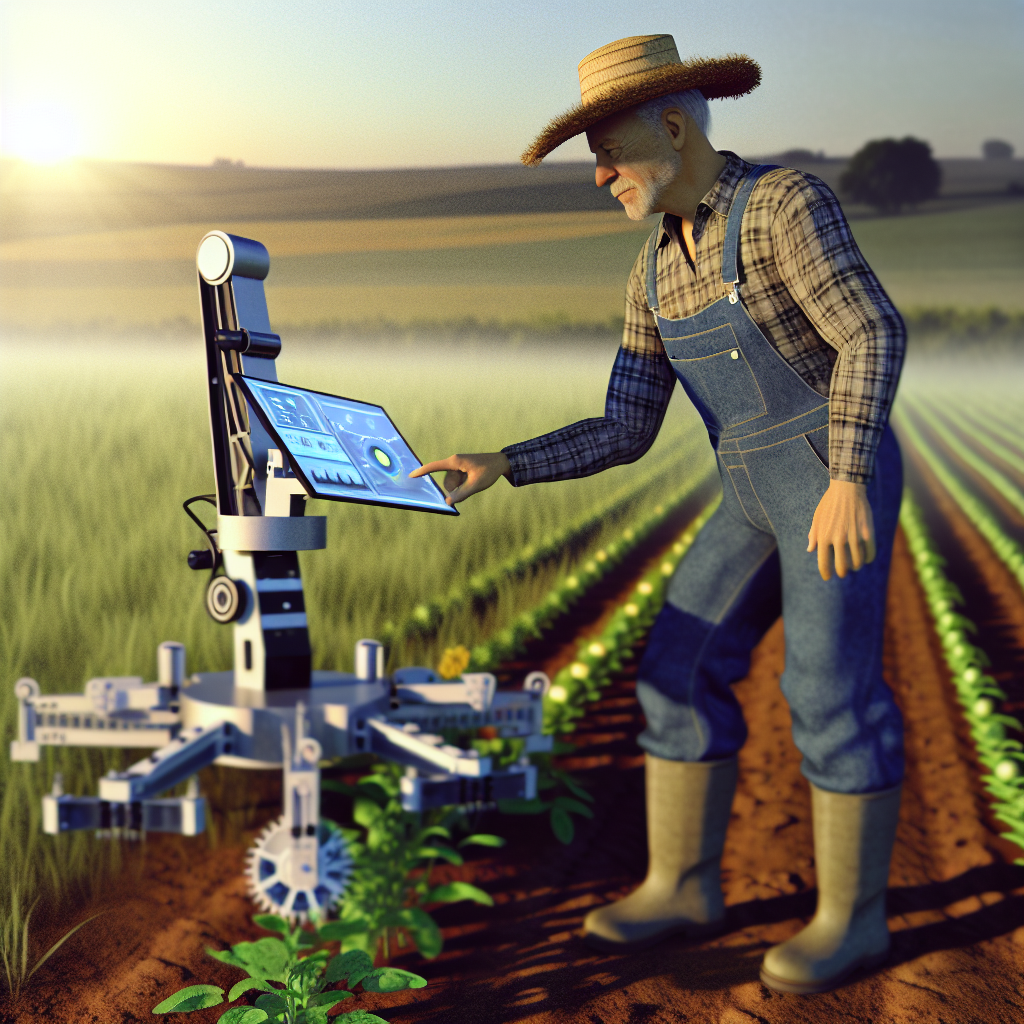
Future Trends in Agricultural Robotics: Innovations on the Horizon
Emerging Technologies
Robotics innovation is transforming traditional farming practices.
Next-generation drones enhance crop monitoring efficiency.
These drones analyze field data in real-time.
Autonomous tractors change the way farmers cultivate land.
They reduce labor costs while increasing productivity.
Smart Farming Solutions
IoT devices integrate seamlessly with agricultural machinery.
This connectivity enables precise farming techniques.
Farmers can optimize resource use through smart irrigation systems.
Data analytics provide insights to improve crop yields.
Collaborative Robotics
Human-robot collaboration will define the future of agriculture.
Robots assist with repetitive tasks on farms effectively.
As a result, farmers can focus more on strategic planning.
Exoskeletons also support workers in heavy lifting tasks.
Sustainability and Environmental Impact
Robotics promote sustainable farming by minimizing waste.
Advanced technologies help in soil and crop health monitoring.
Additionally, robotic systems aid in reducing carbon footprint.
Farmers adopting these technologies contribute to environmental preservation.
Market Growth and Economic Impact
The agricultural robotics market is experiencing rapid growth.
Investments in technology drive innovation and efficiency.
This growth leads to new job opportunities within the sector.
Consequently, economies reliant on agriculture benefit significantly.
Gain More Insights: Weather Data Analytics for Smarter Farming
Best Practices for Farmers Adopting Robotics Technology
Assessing Farm Needs
Begin by identifying the specific needs of your farm.
Evaluate which tasks could benefit from robotic assistance.
Consider areas that require efficiency improvements.
Growing crops or livestock management are good starting points.
Furthermore, understand the scale of your operations.
Showcase Your Farming Business
Publish your professional farming services profile on our blog for a one-time fee of $200 and reach a dedicated audience of farmers and agribusiness owners.
Publish Your ProfileChoosing the Right Technology
Select technology that aligns with your farm’s goals.
Research various robotic systems currently available.
Some robots specialize in planting while others focus on harvesting.
Additionally, consider products with good user reviews.
Investing in Training
Once you’ve chosen a robotic system, invest in training.
Proper training maximizes the technology’s potential.
Ensure your team understands how to operate the robots.
Regular training sessions can help maintain skills.
Moreover, create a support system for ongoing learning.
Integrating Robotics with Existing Systems
Integrate robotic systems with your existing farming practices.
Utilize software that helps manage both traditional and robotic operations.
For example, linking robots to your crop management software enhances data collection.
This integration can streamline workflow and increase productivity.
Monitoring and Maintenance
Regularly monitor the performance of your robotic systems.
Implement a maintenance schedule to ensure optimal functionality.
Inspect robots for wear and tear frequently.
Addressing issues early can prevent costly repairs.
Keep detailed records of all maintenance activities.
Staying Updated
Stay informed about new developments in agricultural robotics.
Attend industry conferences and workshops to gain insights.
Networking with other farmers can provide valuable tips.
Finally, subscribe to agricultural technology publications for ongoing information.
Economic Impact of Robotics on Traditional Farming Landscapes
Cost Reduction
Robotics significantly lowers operational costs in traditional farming.
Automation reduces the need for manual labor, saving money on wages.
Moreover, robots can operate continuously, increasing productivity.
Farmers benefit from decreased costs associated with equipment maintenance.
Increased Yields
Integrating robotics enhances crop yields through precision agriculture.
Robots optimize planting, watering, and harvesting processes.
This technology enables timely interventions, boosting growth rates.
In essence, robotics can lead to higher profits for farmers.
Labor Market Transformation
The introduction of robotics shifts labor demand in agriculture.
While some jobs may decline, new roles in technology arise.
Farmers now seek skilled workers to manage robotic systems.
This transition fosters skilled labor development in rural areas.
Environmental Benefits
Robotics contribute to more sustainable farming practices.
Automation reduces chemical usage through precise applications.
This approach minimizes harmful impacts on local ecosystems.
Overall, robotics support environmental conservation efforts.
Challenges and Considerations
Implementing robotics presents certain challenges for farmers.
Initial investment costs can be a significant barrier to entry.
Showcase Your Farming Business
Publish your professional farming services profile on our blog for a one-time fee of $200 and reach a dedicated audience of farmers and agribusiness owners.
Publish Your ProfileAdditionally, there is a learning curve associated with new technology.
Farmers must adapt to changes in their operational frameworks.
Case Studies
Robotic solutions have transformed various farms worldwide.
For instance, Green Harvest Farms uses drones for crop monitoring.
Similarly, Precision Ag Technologies employs automated tractors for planting.
These examples showcase the potential benefits of robotic integration.
Additional Resources
Enhancing precision agriculture: A comprehensive review of …

